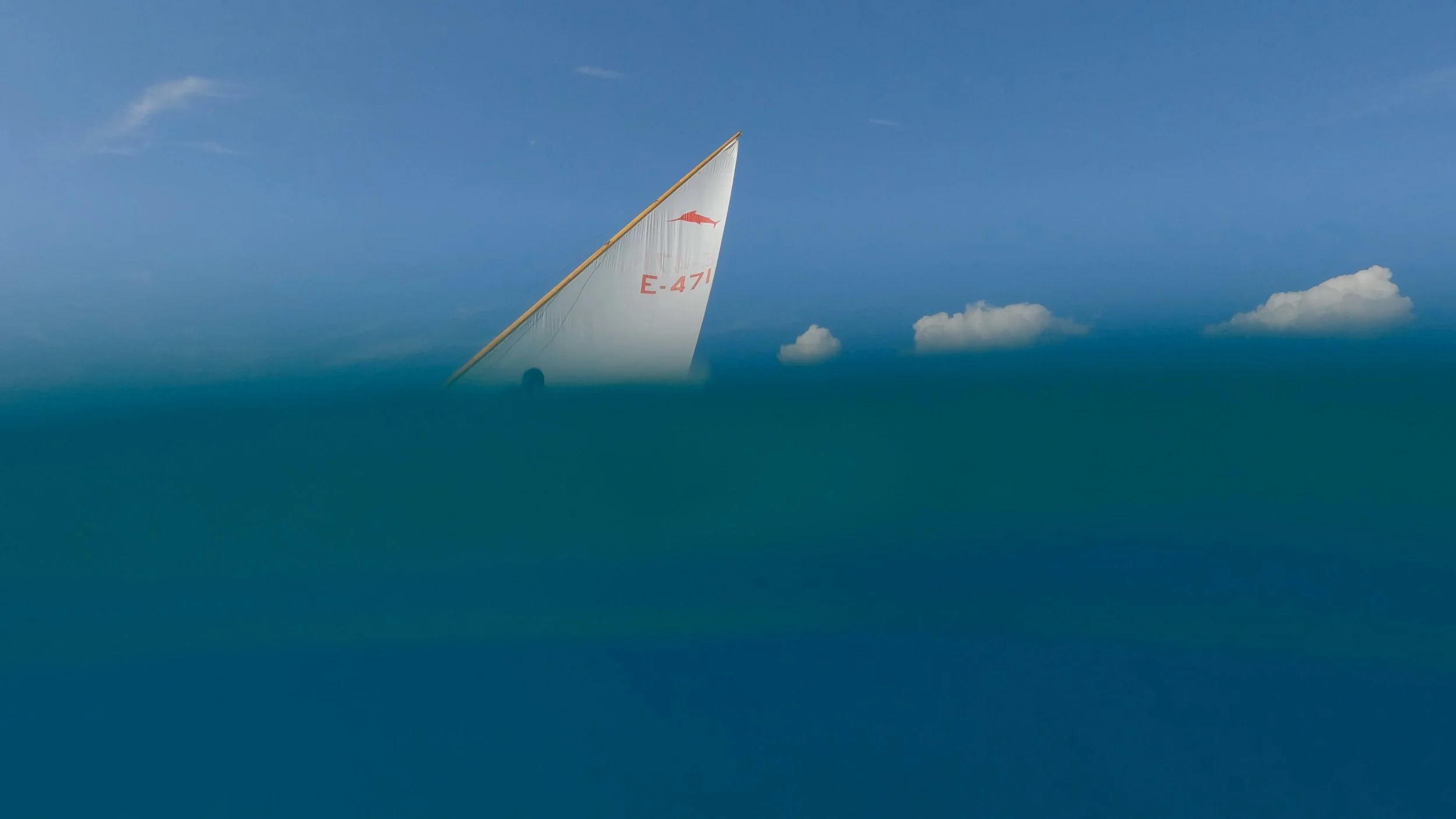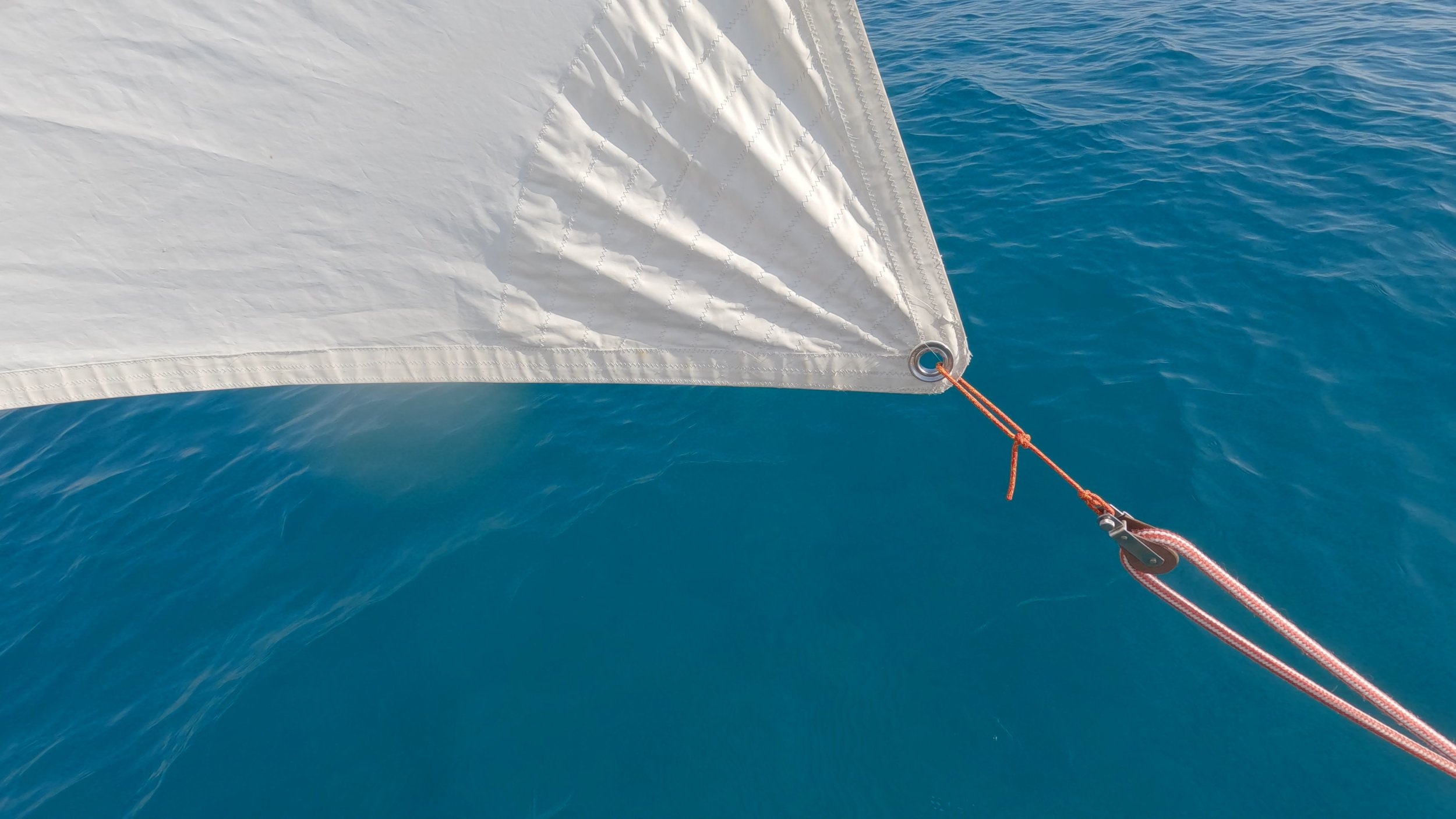
471
Navegando un pedazo de Historia y Conservando el Legado Marítimo
A Chance Encounter that Sparked a Passion
Over a decade ago, at the Club de Mar Vilanova, Jordi Sanhuja, who was an avid sailor aboard his Hobie Cat, was invited by his friend David Arenas to try a patín a vela. That changed everything for him and his way of relating to the sea and sailing. "From that very day, I was hooked on the patín," he recalls. The simplicity of its maneuvers and the direct contact with natural materials like wood offered a sailing experience unlike any other. "I felt like I was truly in control, not just being carried by the boat."
The Discovery of Patín 471
Life's path took him from Vilanova to Denmark and then Austria. It was there that he, almost impulsively, acquired the Patín 471 from a gentleman in Lyon, France. This patín had been stored away for 30 or 40 years, preserving its original paint and sail. "I realized I could sail during the summer and spend the winter restoring the patín," he explains. During transport, the patín absorbed moisture, revealing areas in need of repair—a challenge he embraced wholeheartedly.
Determined to uncover the patín's origins, he conducted extensive research. With the assistance of Joan Coma Juncosa, honorary president of the International Association of Patín a Vela Owners (ADIPAV), he discovered that Patín 471 was built in 1965 and originally registered in Badalona. "He showed me an invoice of his first patín, which was only 20 numbers apart from mine," he shares with enthusiasm.
Patín 471 is unique in many ways. It's 15 centimeters narrower than modern patíns, providing different stability and maneuverability. It retains its original wooden mast without additional rigging, and it still sports its original cotton sail from the 1960s, crafted on the Costa Brava. "Navigating with it is an unparalleled experience; you feel every movement, every breeze, as part of the sea," he says.
He has taken great care to preserve all original elements during restoration, even sourcing period-specific parts when necessary. "I've tried to keep everything as authentic as possible," he notes.
Recently, he brought Patín 471 back to its homeland to participate in the Regata de los 300 in Barcelona, an event that gathered 350 patíns sailing in the waters of Barcelona with the finals of the Americas Cup unfolding in the background. Being able to film and photograph this Patí at home, in the waters of Vilanova, was a luxury. The regatta was not only a personal achievement but also a celebration of maritime tradition and community. "Sharing this passion with sailors from different places enriches the world of the Patí immensely.
The Importance of Preserving Maritime Heritage
The story of Patín 471 transcends personal accomplishment; it highlights the significance of preserving maritime heritage. "Patín 471 is not just an old boat; it's a living testimony of sailing history, a bridge between the past and present," he emphasizes. By restoring and sailing this historic vessel, he showcases the value of maintaining our nautical traditions for future generations.
The journey of Patín 471 and Jordir is a testament to passion, heritage, and the timeless allure of the sea.
Their story invites us to appreciate the beauty of classic sailing and underscores the importance of conserving our maritime legacy. As Patín 471 glides gracefully through the waters of Vilanova once more, it continues to tell its story—one of history, love for the sea, and the unbreakable bond between a sailor and his vessel.
















